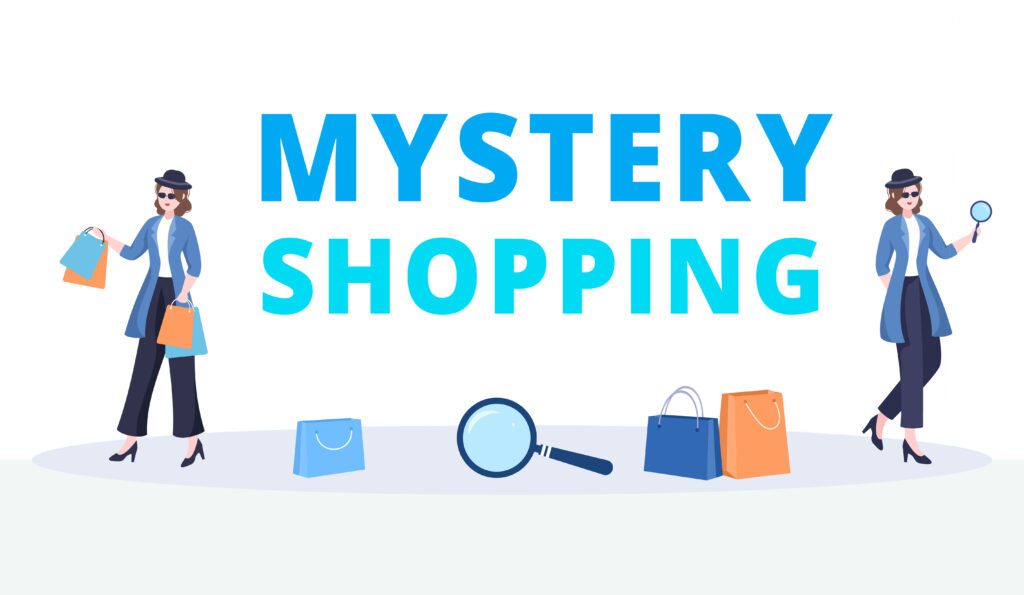What Is Mystery Shopping and How Does It Work?


Table of Contents
Key Takeaways:
- A well-designed mystery shopping program should have clear objectives, detailed guidelines, objective evaluation criteria, timely feedback, actionable reports, and realistic scenarios that reflect the typical customer experience.
- By using mystery shoppers to assess various aspects of their business, such as employee behavior, adherence to company policies, and service quality, companies can gather valuable insights and identify areas for improvement.
- Leveraging insights from mystery shopping, companies can optimize their operations, strengthen their customer relationships, and ultimately drive business success in a competitive market.
Introduction
Mystery shopping is a research method that businesses use to assess and improve their customer service and overall customer experience.
It involves recruiting people, known as “shoppers,” to perform regular transactions with a business, then submit their evaluations of the experience based on established standards and expectations.
This article explores the definition of mystery shopping, its different types, the qualities of a good mystery shopping program, and the reasons why financial institutions use mystery shopping.
It also discusses the benefits that mystery shopping can bring to companies, such as identifying areas for improvement, ensuring customer service standards are upheld, and enhancing staff training and performance.
By gaining valuable insights from mystery shopping, organizations can take strategic actions to enhance their customer service and build lasting customer relationships.
What is the Customer Journey?
Definition of Mystery Shopping
Mystery shopping, also known as secret shopping, is a research and evaluation method used by companies to assess and analyze the quality of customer service and the overall customer experience.
It involves recruiting individuals, known as mystery shoppers, who pose as regular customers and visit a specific store, branch, restaurant, hotel, or any other business to evaluate various aspects of the service provided.
The mystery shopper’s primary role is to act as a typical customer, observing and interacting with the staff, making inquiries, purchasing products or services, and sometimes even lodging complaints or providing feedback. They are typically given a set of instructions or specific criteria to evaluate, such as employee behavior, cleanliness, product knowledge, adherence to company policies, speed of service, and other factors that contribute to customer satisfaction.
After completing their visit, mystery shoppers usually provide detailed feedback, either through a written report or an online survey, highlighting their observations, interactions, and overall experience. This feedback helps businesses identify areas for improvement, train their staff, and enhance the customer experience to meet or exceed customer expectations.
Mystery shopping plays a significant role in quality control, customer service evaluation, and enhancement of operational standards in various industries.
Different Types of Mystery Shopping
1. In-person Mystery Shopping
2. Telephone Mystery Shopping
3. Online Mystery Shopping
4. Mobile Mystery Shopping
5. Video Mystery Shopping
6. Compliance Mystery Shopping
7. Competitor Mystery Shopping
These are just a few examples of the types of mystery shopping that exist. Depending on the industry and specific research objectives, companies may also customize mystery shopping programs to suit their needs.


Qualities of a Good Mystery Shopping Program
1. Clear Objectives
2. Detailed Guidelines
3. Realistic Scenarios
4. Effective Training
5. Objective Evaluation Criteria
6. Timely Feedback
7. Actionable Reports
8. Continuous Improvement
9. Confidentiality and Anonymity
10. Collaboration and Communication
The program should foster open communication and collaboration between the organization, mystery shoppers, and employees. This collaboration helps clarify expectations, address any concerns or questions, and build a partnership for improving the customer experience.
By incorporating these qualities into a mystery shopping program, organizations can gain valuable insights into their customer experience, identify areas for improvement, and enhance their overall service quality.
Why Do Financial Institutions Use Mystery Shopping?
Financial institutions use mystery shopping as a valuable tool for evaluating and improving their customer service and overall customer experience. The collection and analysis of real-time customer feedback helps banks and credit unions understand their customers.
Here some of the specific reasons why financial institutions employ mystery shopping:
1. Customer Service Evaluation
2. Compliance Monitoring
3. Training and Development
4. Identifying Operational Issues
5. Competitive Analysis/Benchmarking
6. Brand Consistency
7. Performance Incentives
An effective mystery shopping program provides financial institutions with insights into the customer experience, helps identify areas for improvement, and contributes to enhancing their service quality and operational efficiency.


How Can Mystery Shopping Benefit My Company?
Ensures Procedures and Processes Are Followed
Mystery shoppers are typically provided with specific guidelines, checklists, or evaluation forms that outline the procedures and processes that should be followed. These guidelines can include criteria such as employee greetings, product knowledge, service quality, adherence to sales scripts, cleanliness standards, or response time.
By objectively assessing the employees’ performance against these criteria, mystery shoppers can identify any deviations or areas where improvements are needed.
Ensures Customer Service Standards Are Upheld
Mystery shoppers provide an objective perspective on the customer experience. They assess various aspects such as employee behavior, product knowledge, response time, cleanliness, and adherence to company policies. By observing these elements, mystery shoppers can identify gaps or areas where customer service standards may not be met.
When deficiencies are identified, companies can provide targeted training programs to address any gaps in customer service skills or product knowledge. This helps employees improve their performance and enhances overall customer service standards.
Ensuring Cross Selling, Upselling and Attempts to Further the Customer Journey Are Taken
When designing a mystery shopping program, companies can include specific criteria related to cross-selling, upselling, and customer journey enhancements. This can involve providing mystery shoppers with scenarios or specific products/services to inquire about, assess the staff’s ability to suggest additional items, or evaluate how well the customer journey is facilitated.
Ensures Staff Training Is Implemented and Effective
When designing a mystery shopping program, companies can include specific criteria related to cross-selling, upselling, and customer journey enhancements. This can involve providing mystery shoppers with scenarios or specific products/services to inquire about, assess the staff’s ability to suggest additional items, or evaluate how well the customer journey is facilitated.
Conclusion
Mystery shopping serves as a powerful tool for companies across various industries to evaluate and improve their customer service and overall customer experience. By employing mystery shoppers to assess different aspects of their business, financial institutions can gather valuable insights, identify areas for improvement, and enhance their service quality.
The clear objectives, detailed guidelines, realistic scenarios, and objective evaluation criteria of a well-designed mystery shopping program contribute to its effectiveness.
Moreover, timely feedback, actionable reports, and a commitment to continuous improvement ensure that financial institutions can make data-driven decisions and address evolving customer needs.
By leveraging the benefits of mystery shopping, banks and credit unions can optimize their operations, strengthen their brand reputation, and foster long-term customer loyalty in today’s competitive marketplace.
If you’re ready to learn more about implementing your own mystery shop program, reach out to one of our CX experts today!
Have More Questions? Reach Out to Our Team Of Experts
Net Promoter®, NPS®, NPS Prism®, and the NPS-related emoticons are registered trademarks of Bain & Company, Inc., Satmetrix Systems, Inc., and Fred Reichheld.















